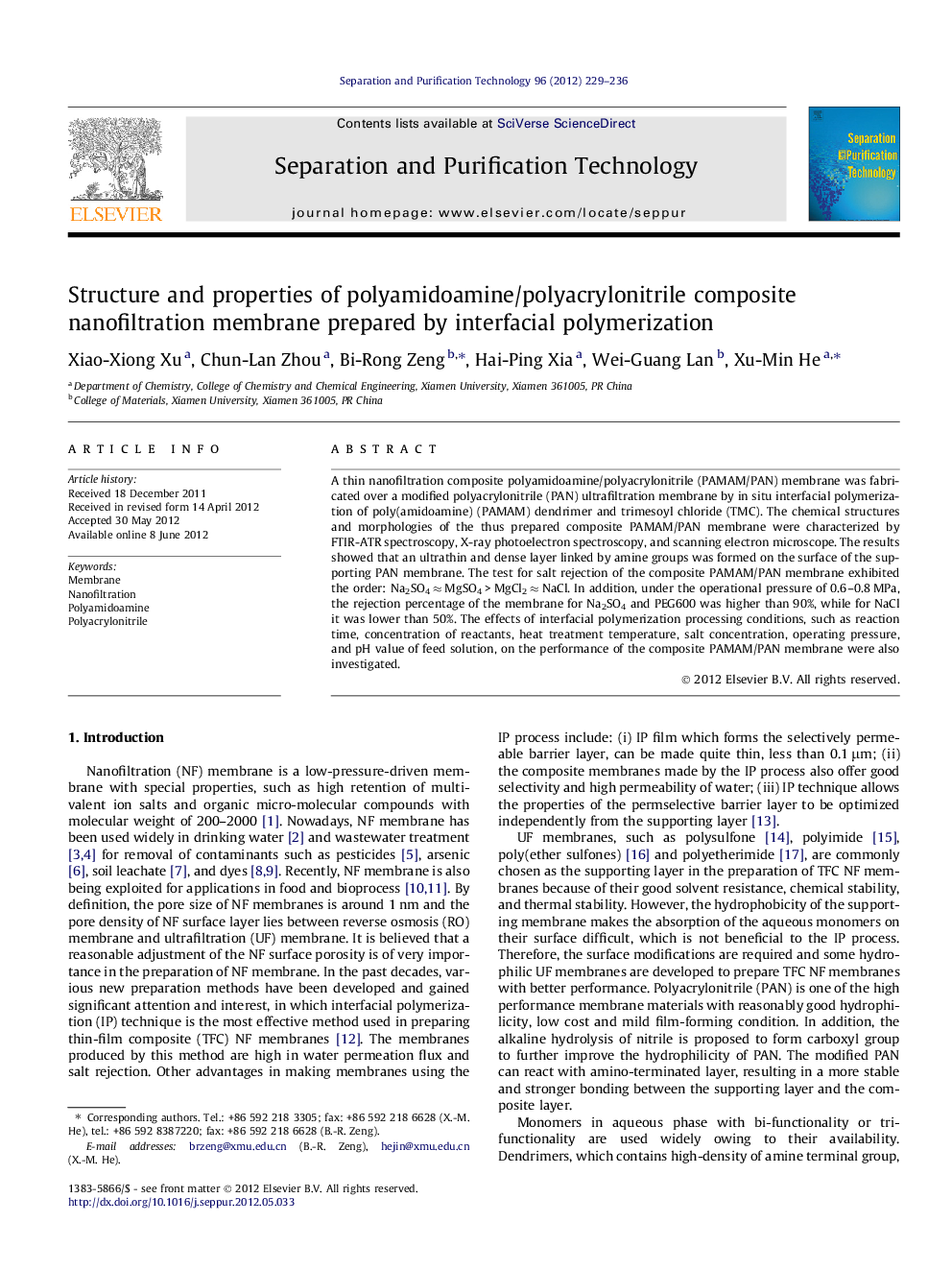| Article ID | Journal | Published Year | Pages | File Type |
|---|---|---|---|---|
| 642134 | Separation and Purification Technology | 2012 | 8 Pages |
A thin nanofiltration composite polyamidoamine/polyacrylonitrile (PAMAM/PAN) membrane was fabricated over a modified polyacrylonitrile (PAN) ultrafiltration membrane by in situ interfacial polymerization of poly(amidoamine) (PAMAM) dendrimer and trimesoyl chloride (TMC). The chemical structures and morphologies of the thus prepared composite PAMAM/PAN membrane were characterized by FTIR-ATR spectroscopy, X-ray photoelectron spectroscopy, and scanning electron microscope. The results showed that an ultrathin and dense layer linked by amine groups was formed on the surface of the supporting PAN membrane. The test for salt rejection of the composite PAMAM/PAN membrane exhibited the order: Na2SO4 ≈ MgSO4 > MgCl2 ≈ NaCl. In addition, under the operational pressure of 0.6–0.8 MPa, the rejection percentage of the membrane for Na2SO4 and PEG600 was higher than 90%, while for NaCl it was lower than 50%. The effects of interfacial polymerization processing conditions, such as reaction time, concentration of reactants, heat treatment temperature, salt concentration, operating pressure, and pH value of feed solution, on the performance of the composite PAMAM/PAN membrane were also investigated.
► A novel thin nanofiltration membrane is consisting of the composite of PAMAM/PAN. ► PAMAM/PAN was fabricated by interfacial polymerization using PAMAM and TMC. ► An ultrathin and dense layer linked by amine groups was formed on the surface of PAN. ► The rejection percentage of the membrane for Na2SO4 and PEG600 were higher than 90%.
